¿Sabías que puedes volver a cultivar vegetales a partir de desechos? Las hierbas, las cebollas verdes, la lechuga y el apio son populares, pero incluso puedes volver a cultivar zanahorias. Dado que la raíz principal (la parte naranja de la zanahoria) no se reformará a partir de los restos, cultivará zanahorias a partir de zanahorias para obtener verduras y semillas.
Las zanahorias son bienales, lo que significa que producen flores y semillas en su segundo año. Hasta que sus flores florezcan, producirán una plétora de deliciosas verduras. Esta guía lo guiará a través de cómo cultivar zanahorias a partir de zanahorias, que es un experimento divertido para que disfruten todos en la familia.
Materiales necesarios
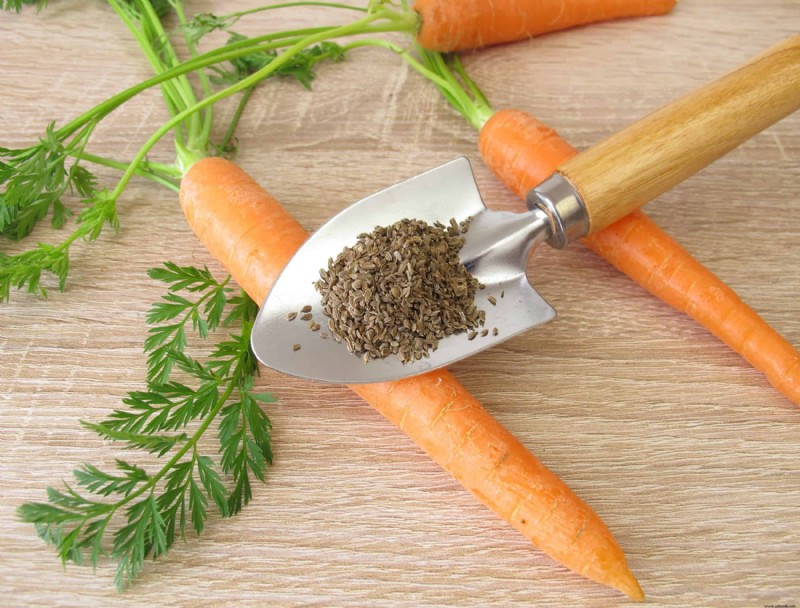
Antes de comenzar a cultivar sus zanahorias a partir de desechos, necesitará algunas cosas que se enumeran a continuación:
- Zanahorias o semillas de zanahoria
- Guantes
- Paleta (opcional)
- Cuchillo
- Cuenco
- Suelo
- Olla (opcional)
- Tijeras
- Bolso marrón
Paso uno:corta las zanahorias
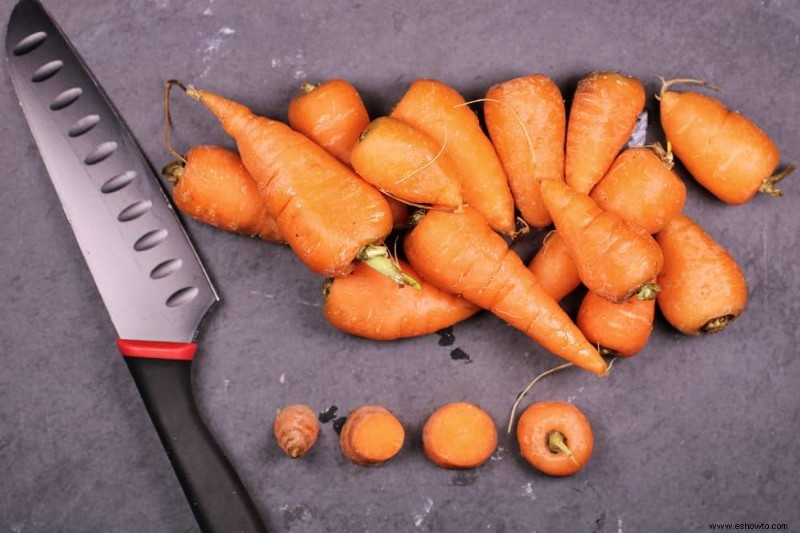
Para volver a cultivar zanahorias, puede usar zanahorias del mercado de agricultores local, la tienda de comestibles o su propia variedad cultivada en el patio trasero. Si usa sus propias zanahorias de jardín, es posible que necesite una paleta para aflojar suavemente la tierra alrededor de las zanahorias antes de sacarlas del suelo.
Para preparar la zanahoria para que vuelva a crecer, use un cuchillo para cortar un trozo de 1 pulgada que se une al extremo con las verduras. Asegúrese de que su trozo sea lo suficientemente grande como para que todavía tenga algunas "líneas" que lo atraviesen. Estas se llaman cicatrices laterales de la raíz y es donde crecerán sus nuevas raíces. Dependiendo de cómo y cuándo se cosechó la zanahoria, es posible que ya veas las raíces blancas saliendo de estas líneas.
Si las verduras todavía están unidas, córtelas. Cuando los deje, la zanahoria puede volverse demasiado pesada para el siguiente paso. Si ha cosechado zanahorias del jardín, guarde las verduras para sopas, ensaladas y pestos. O bien, puede usarlos en lugar de perejil.
No olvides comer la zanahoria. ¡Crujido! Esa es la mejor parte.
Paso dos:coloque las zanahorias en agua
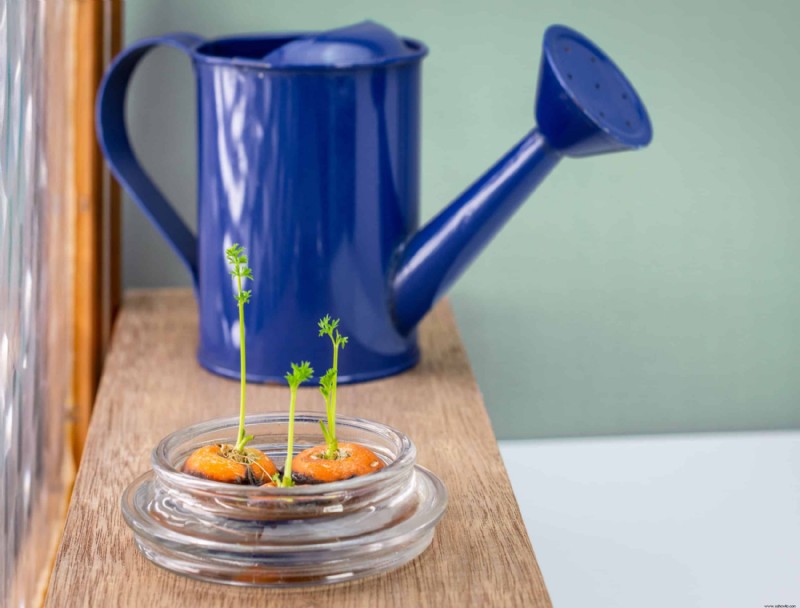
Encuentre un tazón poco profundo o un recipiente de plástico y llene el fondo con suficiente agua para cubrir aproximadamente la mitad de su(s) trozo(s) de zanahoria. Desea que su (s) zanahoria (s) esté (n) en suficiente agua para que se puedan formar las raíces, pero la parte superior no debe sumergirse ni mojarse demasiado. Si la parte superior de la zanahoria se sumerge o se deja en el agua demasiado tiempo, se pudrirá.
Coloque la parte superior de la zanahoria en el agua, con el lado cortado hacia abajo. Si ha dejado hojas verdes en las zanahorias, aquí es donde puede ser complicado hacer que la zanahoria se asiente correctamente. Si esto es un problema, o a medida que crecen los greens, puede crear un sistema de apoyo con palillos o brochetas.
Paso tres:Espera

Coloque el tazón con su(s) zanahoria(s) frente a una ventana que reciba mucho sol. Espera y observa cómo crecen las puntas de las zanahorias. Esto solo debería tomar unos pocos días. Puede comenzar a comer sus hojas de zanahoria en este punto y asegurarse de cambiar el agua cada tres días más o menos.
No espere demasiado para pasar al paso cuatro, o sus zanahorias pueden pudrirse, arruinando todo el experimento
Cuarto paso:plantar las puntas de las zanahorias
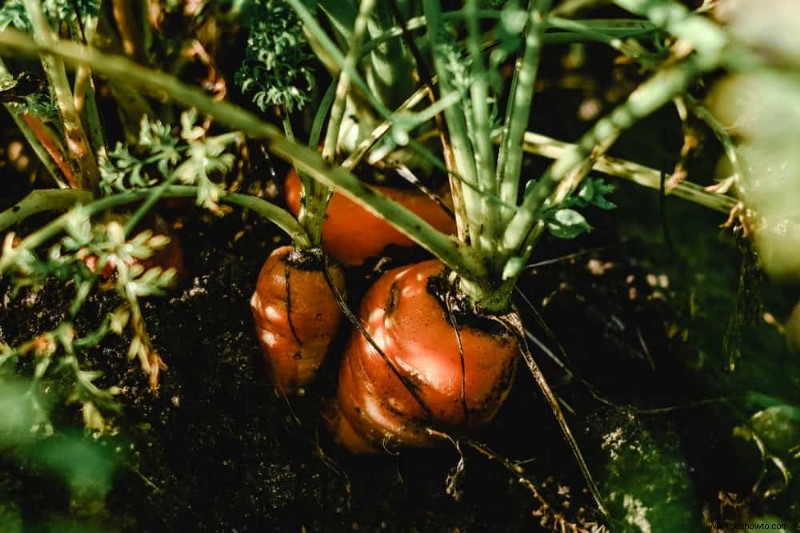
Una vez que note que se forman raíces blancas y peludas en la parte naranja de la zanahoria, su zanahoria está lista para ser plantada en el suelo. Selecciona una maceta: no es necesario que sea muy profunda, ya que la zanahoria no echará raíces profundas.
Llena tu maceta con la tierra para macetas de vegetales que prefieras. Haga un pequeño agujero en el suelo y plante la zanahoria, cubriéndola con tierra, dejando solo la parte superior de la zanahoria sobresaliendo. Riega la zanahoria y colócala en un área con luz brillante, pero indirecta, durante una semana antes de moverla a un lugar que reciba más sol.
If you have garden beds, you can transplant your carrot from your pot to your garden after it’s well established. Alternatively, you can also plant the carrot top directly into the garden after it has rooted in water. Plant carrots in a location that receives a lot of sun and water regularly. Keeping the plant indoors is also a viable option.
Step Five:Harvest Seeds and Greens
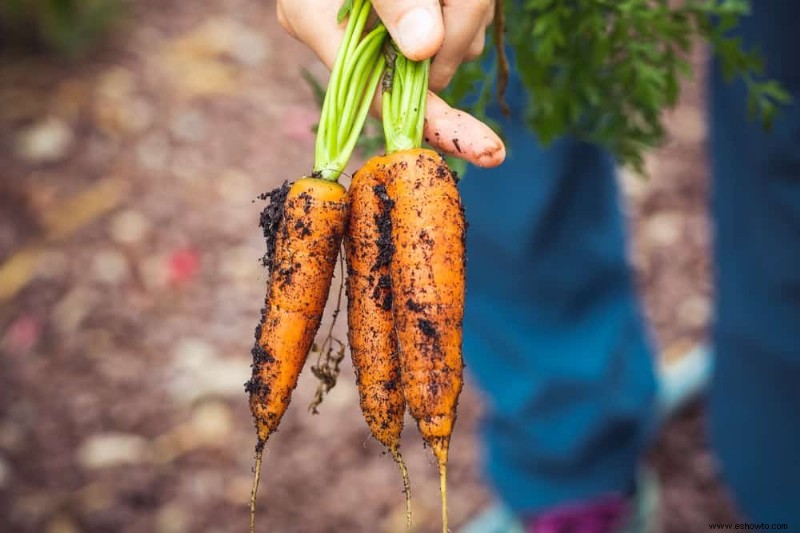
You can continue to harvest carrot greens for eating, but at this point, if you want more carrots later, leave the carrot greens alone. Though the taproot of your carrots won’t regrow, this plant’s flowers will provide you with countless seeds.
If you planted your carrot outside, you’ll have to wait until spring for it to flower. If you have your plant inside, it may flower sooner. Eventually, white flowers will form. Let them be until they start to brown and dry, leaving a carrot seed head. Using scissors, cut each seed head and place them in a paper bag.
Leave them for a few weeks to allow them to fully dry. Once the seeds have darkened, they are ready to be picked. If you only have a few heads, you can do this by hand-picking them. For larger-scale harvests, you may want to set up a drop-sheet and use a sieve to sort the seeds. Be sure to find a cool, dry place to store them over winter. Plant the seeds in the spring and reap the harvest of all your hard work.
Cold Framing
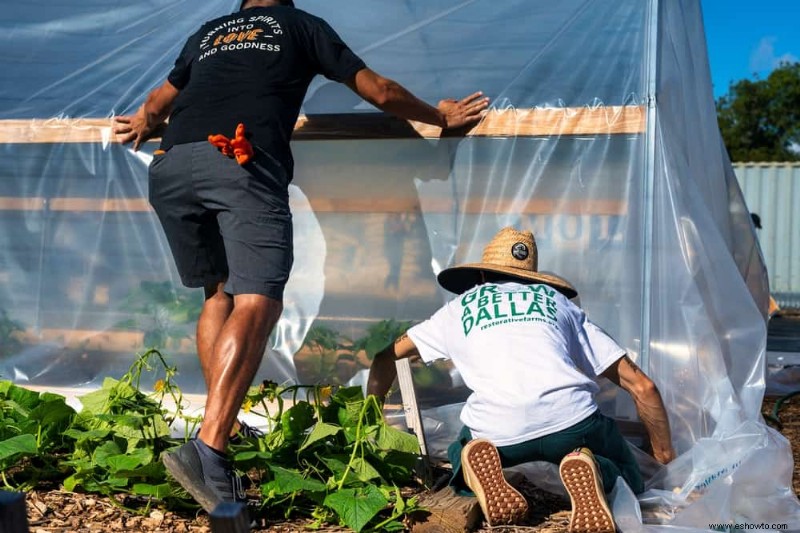
Perhaps you’ve already got carrots in your backyard and you’d like to harvest those seeds, rather than grow seeds from scraps. An easy way to do this is to leave a few whole carrots in the ground. The following year they will flower and you can harvest the carrot seeds in the same way as mentioned above. The one benefit to only planting the carrot top is that you get to enjoy the carrot. If you leave your carrots in the ground over winter and let them flower the following year, they will no longer be edible.
If you’re thinking about leaving a few carrots in the ground for seeds, maybe you’ve also thought about cold framing. There’s no need to harvest your carrots all at once if you live in a climate where the winters are cold. You can leave the carrots in the ground and harvest them throughout the winter. This is much easier for storage, and it keeps the carrots fresh and ready for whenever you’re ready to eat them.
Conclusión
Growing carrots from carrots is a fun backyard experiment and a great way to harvest your own carrot seeds. Although carrots won’t regrow their orange taproot, the carrot tops are quick growers. If you like a particular variety, or you have a rare seed, you can very easily collect hundreds of new seeds from the flowers that form.
Do you have a favorite variety of carrots? Have you tried harvesting the seeds? Let us know in the comments.

